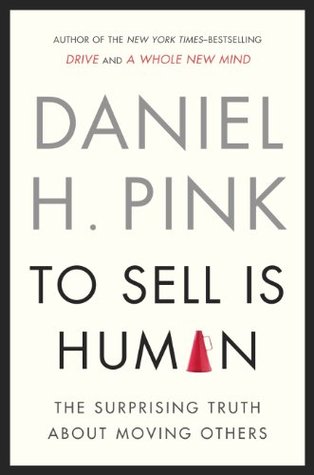More on this book
Community
Kindle Notes & Highlights
Read between
April 25 - June 6, 2017
every e-mail we send is a pitch. It’s a plea for someone’s attention and a...
This highlight has been truncated due to consecutive passage length restrictions.
In one experiment, they used the “think-aloud method,” wherein participants worked through their e-mail in-boxes and narrated their decisions about what they read, replied to, forwarded, or deleted. The researchers discovered that participants based their decisions on two factors: utility and curiosity.
As a result, say the Carnegie Mellon researchers, your e-mail subject line should be either obviously useful (Found the best & cheapest photocopier) or mysteriously intriguing (A photocopy breakthrough!), but probably not both (The Canon IR2545 is a photocopy breakthrough).
Meet the Twitter pitch, which uses Twitter as a platform and its character count as a limit on loquaciousness. One of the pioneers of this form is Stowe Boyd, a programmer, designer, and investor. In 2008 Boyd was heading to a conference and planning to meet with some start-up companies. To avoid getting buried beneath a
sandstorm of eager entrepreneurs, he required any start-up seeking a meeting to send him its pitch via Twitter. This approach, said one commentator, is “quick, painless, and to-the-point. It cuts through the PR babble and forces companies to summarize what they do in 140 characters or less.”19 As Twitter insinuates itself more deeply into our lives, Boyd’s “twitpitch” has become another important tool in everyone’s persuasion kit.
The types of tweets with the lowest ratings fell into three categories: Complaints (“My plane is late. Again.”); Me Now (“I’m about to order a tuna sandwich”); and Presence Maintenance (“Good morning, everyone!”).21 But three of the categories rated the highest provide some insight on pitching via this new medium. For instance, readers assigned the highest ratings to tweets that asked questions of followers, confirming once again the power of the interrogative to engage and persuade. They prized tweets that provided information and links, especially if the material was fresh and new and
...more
With a small notepad or on your smartphone, jot down the great pitches you hear as you’re moving through the world—a
pecha-kucha.
They call their creation pecha-kucha,* which is Japanese for “chatter.”
A pecha-kucha presentation contains twenty slides, each of which appears on the screen for twenty seconds. That’s it. The rules are rigid, which is the point. It’s not nineteen slides or twenty-one seconds. It’s 20 x 20. Presenters make their pitch in six minutes and forty seconds of perfectly timed words and images.
Sales and non-sales selling are developing along a similar path—because the stable, simple, and certain conditions that favored scripts have now given way to the dynamic, complex, and unpredictable conditions that favor improvisation.
three essential rules of improvisational theater: (1) Hear offers. (2) Say “Yes and.” (3) Make your partner look good.
Improvisational theater has no room for overcoming objections because it’s built on a diametrically opposite principle. “The bread and butter of improv,” says Salit, “is hearing offers.” The first principle of improvisation—hearing offers—hinges on attunement, leaving our own perspective to inhabit the perspective of another. And to master this aspect of improvisation, we must rethink our understanding of what it is to listen and what constitutes an offer.
We learn this in another exercise, called “Amazing Silence,” where I’m paired with a top television executive about ten years my senior. The rules: One person has to reveal to the other something important to him. The other person, who must make eye contact the entire time, then responds—but he must wait fifteen seconds before uttering a word.
The ultimate idea, she says, uncorking a small bottle of Zen in the cramped conference room when the session is over, is to “listen without listening for anything.”
He’s more likely to say, “Sorry, I can’t give two hundred dollars.” That’s an offer. Maybe he can donate a smaller amount. Or he might say, “No, I can’t give right now.” That’s an offer, too. The obvious move is to fasten onto the “right now” and ask when might be a better time. But the entire sentence is an offer—perhaps to contribute to your charity some other way, say, as a volunteer. “Offers come in all shapes and sizes,” says Salit. But the only way to hear them is to change the way you listen and then change the way you respond.
Roger Fisher,
influential book ever written about negotiation. Fisher’s signal contribution was the concept of “principled negotiation,” which proposed that the aim of negotiating shouldn’t be to make the other side lose but, where possible, to help it win. This idea, which quickly became shorthanded as “win-win,” transformed business and legal education.
That’s something that Fuller Brush founder Alfred Fuller intuited years before improv was ever invented. “Never argue,” he wrote. “To win an argument is to lose a sale.”11


